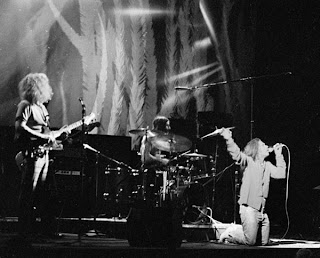Following in the Footsteps of the Masters

The opening photograph for the History of Photography chapter in Kendall-Hunt's forthcoming textbook, Visual Communication in a Digital Age, is a conundrum of sorts, in that it is not an historical photograph. Instead, it is a picture that I took just a few years ago, on one of my summer Western pilgrimages.
My premise for taking this picture and for using it in the book, of which I am one of four co-authors, is that all artists, be they musicians, sculptures, painters, photographers and even pre-Columbian North Americans scratching in rocks with charcoal and flint, are part of a larger conversation. This conversation, of course, was originally identified by Kenneth Burke, who dubbed it the "Conversation of Mankind." In essence, he wrote that all learners enter this conversation which began before them and goes on after them, to participate in the knowledge making of mankind. Thus musicians study who and what went before them, and photographers do the same.
Country Joe and the Fish, the Fillmore East, 1969 - photo by Worth Weller
Joe McDonald, of Country Joe and the Fish, was a big fan of folk legend Woody Guthrie and read the poetry of the British anti-war poet, Robert Service. Janis Joplin derived much of her own raspy and gutsy populist style from the earlier works of blues legends such as Bessie Smith and Leadbelly.
In the summer of 2004 – almost 40 years after I met Adams, my wish came true. Climbing the cliff wall on the far side of the canyon, I planted my own feet in nearly the exact footsteps of O'Sullivan and Adams to photograph this historical scene. O'Sullivan was the first to photograph this exact same view of these monumental Anasazi ruins, in 1871, and Adams recreated O'Sullivan's work in 1962.
This picture please me on several levels, mostly for its sly irony. Not only does it fit in neatly with my "conversation of photographers," but it also even references the Pre-Columbian artists scratching in the rocks with charcoal, flint, and organic dyes – notice the petroglyph, the life-size human figure, at the very bottom of the picture, just to the left of center.




1 Comments:
It is fascinating how photography can connect us to artistic traditions across time.
Post a Comment
<< Home